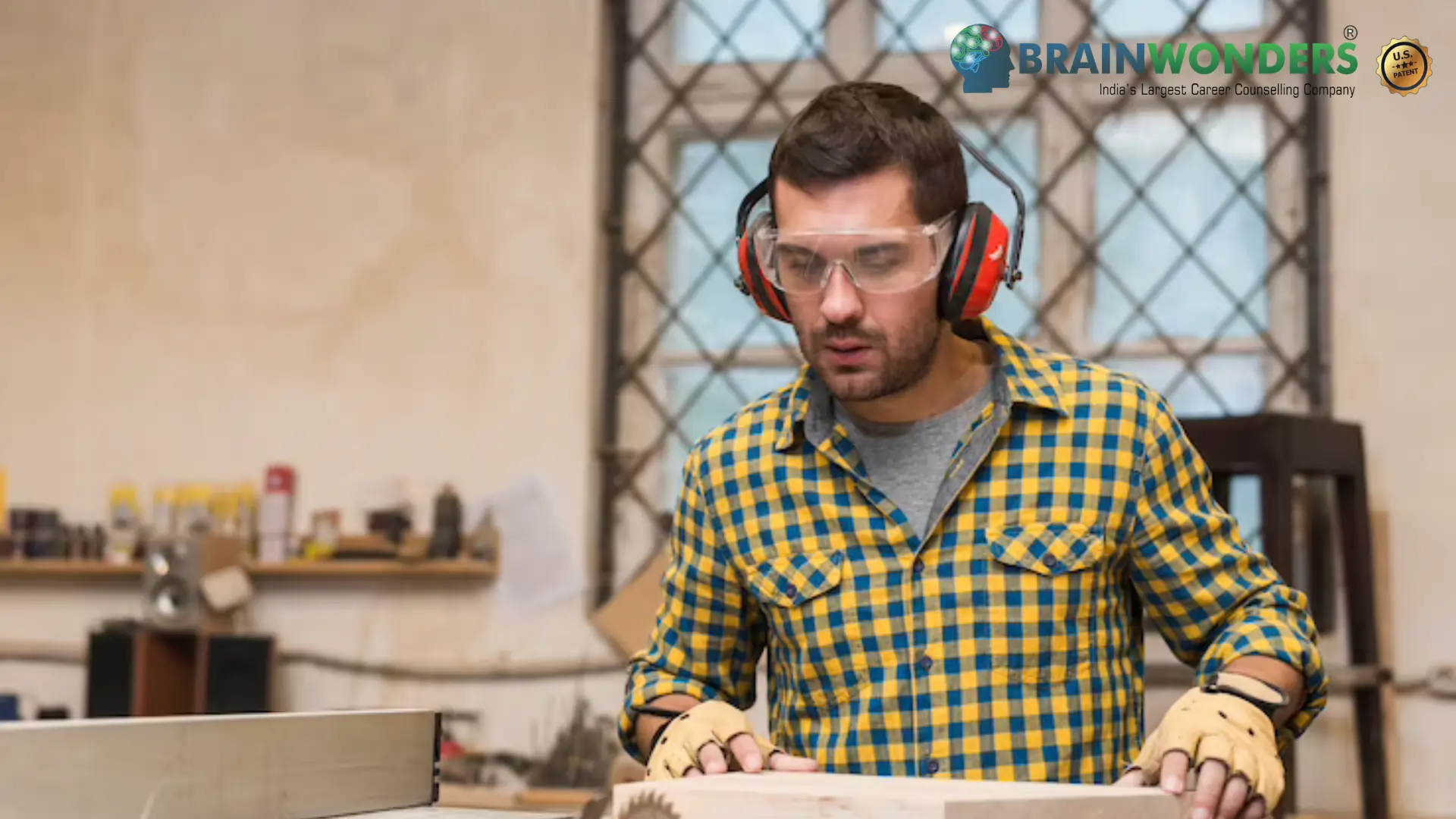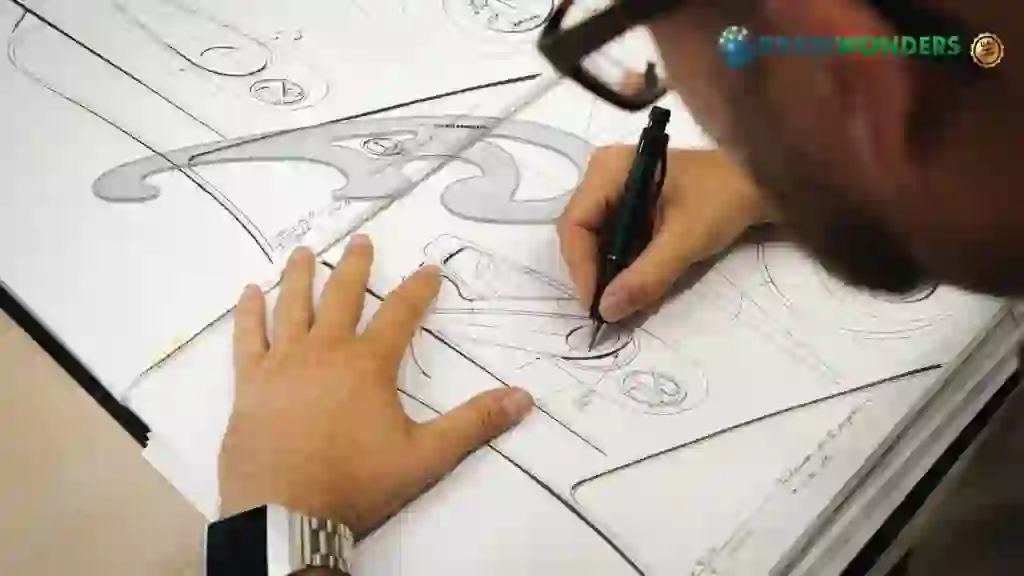How to become a Patternmaker, Wood
Overview, Courses, Exam, Colleges, Pathways, Salary

Overview
Who is Patternmaker, Wood ?
The future for patternmakers in the metal and plastic industries looks promising as technological advancements and manufacturing processes continue to evolve. Integrating automation, computer-aided design (CAD), and additive manufacturing technologies will streamline patternmaking processes, enhance precision, and improve overall efficiency. Additionally, the growing demand for customized and complex components in various industries will create opportunities for patternmakers. Adapting to new materials and techniques, staying updated with industry trends, and continuously honing skills will be essential for patternmakers to thrive in the evolving landscape of metal and plastic manufacturing.
Typical day at work
What does Patternmaker, Wood do?
- Pattern Design: Wood patternmakers interpret engineering drawings, blueprints, or specifications to understand the design requirements. They analyze dimensions, tolerances, and functional considerations to develop accurate and functional wooden patterns.
- Material Selection: Wood patternmakers choose suitable wood species based on the specific application and requirements of the pattern. They consider factors such as durability, stability, and workability to ensure the chosen wood is appropriate for the intended use.
- Pattern Construction: Wood patternmakers use hand tools and woodworking machinery to shape, carve, and assemble wooden pieces into the desired pattern form. They work precisely to create accurate dimensions, contours, and details as the design specifies.
- Finishing and Surface Treatment: Wood patternmakers apply various finishing techniques, such as sanding, sealing, staining, or painting, to enhance the appearance and durability of the wooden patterns. This step ensures the patterns are smooth, resistant to wear, and able to withstand the casting process.
- Pattern Maintenance and Repair: Wood patternmakers are responsible for maintaining and repairing wooden patterns to ensure their longevity and optimal performance. They inspect patterns regularly, make necessary repairs or replacements, and ensure patterns are in good condition for continued use.
Abilities and Aptitude needed
What are the skills, abilities & aptitude needed to become Patternmaker, Wood?
- Woodworking Skills: Wood patternmakers must possess strong woodworking skills and knowledge. They should be proficient in using various hand tools and woodworking machinery, such as saws, chisels, planes, routers, and drills, to shape and assemble wooden patterns.
- Reading and Interpretation Skills: Wood patternmakers need excellent reading and interpretation skills to understand engineering drawings, blueprints, or specifications. To create precise wooden patterns, they must accurately interpret design requirements, dimensions, and tolerances.
- Attention to Detail: Wood patternmakers must have a keen eye for detail to ensure accuracy in pattern construction. They need to pay close attention to measurements, angles, contours, and other specifications to create patterns that meet design requirements.
- Spatial Awareness: Wood patternmakers require strong spatial awareness to visualize three-dimensional patterns based on two-dimensional drawings or designs. They must understand how different wooden components fit together and translate design concepts into physical patterns.
- Problem-Solving Abilities: Patternmaking often involves solving complex design challenges or overcoming technical issues. Wood patternmakers should possess problem-solving abilities to analyze problems, develop creative solutions, and make necessary pattern adjustments or modifications.
- Manual Dexterity: Wood patternmakers need good manual dexterity to handle various tools and work with precision. They must make accurate measurements, use tools with control and finesse, and execute intricate woodworking techniques.
- Time Management: Wood patternmakers often work on multiple projects simultaneously. Practical time management skills are essential to prioritize tasks, meet deadlines, and ensure efficient workflow in the patternmaking process.
- Patience and Perseverance: Patternmaking can be a meticulous and time-consuming process. Wood patternmakers must possess patience and perseverance to work through complex designs, repetitive tasks, and detailed finishing work to achieve the desired outcomes.
Salary
Salary for Patternmaker, Wood?
Salary of Wood Patternmakers is as follows :
- Minimum Monthly Salary: Entry-level Wood Patternmakers can expect a minimum monthly salary ranging from INR 20,000 to INR 30,000. These initial earnings are typical for individuals who have recently started their careers in woodworking and patternmaking.
- Maximum Monthly Salary: Highly experienced and specialized Wood Patternmakers with extensive expertise in intricate woodwork, advanced design skills, and proficiency in crafting complex patterns may earn anywhere from INR 60,000 to INR 1,20,000 or more per month. Patternmakers working on high-profile projects, custom designs, or architectural woodwork may command higher salaries.
- Annual Salary: The annual salary for entry-level or junior Wood Patternmakers could range from INR 2,40,000 to INR 3,60,000. As Patternmakers gain more experience, master advanced woodworking techniques, and take on leadership roles. Their annual income can increase from approximately INR 4,80,000 to INR 9,60,000 or higher.
- Highest Paying Jobs and Scope: Wood Patternmakers specializing in intricate furniture design, custom cabinetry, architectural millwork, or woodworking for artistic installations often enjoy better salary prospects. Those collaborating with renowned interior designers, architectural firms, or heritage restoration projects may have enhanced earnings. The role of Wood Patternmakers is pivotal in translating design concepts into precise and functional wooden pieces. With a growing demand for bespoke woodwork, artisanal craftsmanship, and sustainable design, skilled Wood Patternmakers are anticipated to have consistent career opportunities. Patternmakers who continuously refine their woodworking skills, stay updated with design trends, and excel in attention to detail will likely have promising career growth in the woodworking and furniture industry.
Pathways
How to become an Patternmaker, Wood?
Entrance Exam
Entrance Exam for Patternmaker, Wood ?
Courses
Which course I can pursue?
Best Colleges
Which are the best colleges to attend to become an Patternmaker, Wood?
Industries
Which Industries are open for Patternmaker, Wood?
- Foundries: Wood patternmakers are commonly employed in foundries where metal components are produced through casting processes. They create wooden patterns used to make moulds for casting metal parts.
- Manufacturing and Engineering: Wood patternmakers can work in manufacturing facilities that produce a wide range of products requiring wooden patterns. This includes furniture manufacturing, cabinetry, millwork, and woodworking.
- Construction and Architecture: Wood patternmakers may find opportunities in the construction and architecture sectors. They create patterns for casting or fabricating wooden elements used in construction projects, such as decorative mouldings, architectural details, or customized wooden components.
- Entertainment and Events: Wood patternmakers can contribute to the entertainment industry by creating patterns for stage sets, props, or exhibition displays that require custom-designed wooden elements.
- Fine Arts and Sculpture: Patternmakers specializing in wood may work in the fine arts industry, collaborating with artists and sculptors to create wooden patterns or moulds for artistic creations or sculptures.
- Model Making: Wood patternmakers may find employment in industries that require precise scale models, such as architectural model making, industrial design, or product prototyping.
- Custom Woodworking: Some wood patternmakers establish their businesses or workshops, offering custom patternmaking services to clients with unique woodworking needs.
internship
Are there internships available for Patternmaker, Wood?
- Woodworking Companies: Woodworking companies or custom woodworking shops may offer internships or apprenticeships for individuals interested in patternmaking. These opportunities provide practical experience in pattern design, construction, and finishing within a professional woodworking environment.
- Furniture Manufacturers: Internships may be available in furniture manufacturing companies where wood patternmakers create patterns for specific furniture pieces or components. These internships allow individuals to learn about patternmaking techniques specific to the furniture industry.
- Architectural Woodworking: Companies specializing in architectural millwork or woodworking may offer internships where patternmakers work on projects related to custom architectural elements, such as moldings, doors, or cabinetry.
- Artisan Workshops: Some artisan workshops focused on fine woodworking or sculptural woodworking may offer internships or apprenticeships for individuals interested in patternmaking for artistic or sculptural purposes.
- Vocational Training Institutions: Technical schools or vocational training institutions with woodworking programs may have internships or work placements as part of their curriculum. These internships provide students with practical training opportunities to develop patternmaking skills under the guidance of experienced woodworkers.
- Collaborations with Master Patternmakers: Aspiring wood patternmakers may seek opportunities to collaborate with experienced master patternmakers. This could involve working as an assistant or apprentice in their workshops, learning advanced techniques and gaining insights into the intricacies of patternmaking.
Career outlook
What does the future look like for Patternmaker, Wood?
The future for wood patternmakers looks promising as woodworking continues to be valued for its craftsmanship and versatility. While technological advancements may automate certain aspects of patternmaking, the demand for custom woodworking and unique designs is expected to persist. Wood patternmakers who adapt to new tools and techniques, embrace digital design software, and incorporate sustainable practices will likely thrive. As the focus on artisanal and handmade products grows, wood patternmakers have the opportunity to contribute their skills to industries such as furniture, architecture, and art. Combining traditional woodworking expertise with innovative approaches will continue to be highly valued in the evolving landscape of woodworking and patternmaking.







